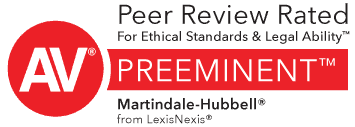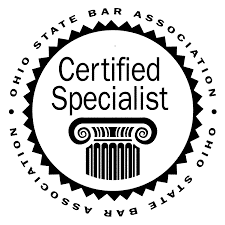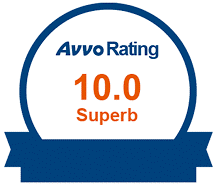Small Business Administration Coronavirus Forgivable Loan Program
posted by Neil E. Klingshirn | March 30, 2020 in Business Law
|
Q |
I heard that my business can borrow money to cover two months of payroll and not pay it back. Is that true? |
| A |
Yes, as long as you are a small business and spend the loan on qualifying expenses. Congress passed the Paycheck Protection Program as an amendment to Section 7(a) of the Small Business Act (15 USC § 636(a)). It is a stimulus program that encourages small business owners economically impacted by COVID-19 to maintain payroll and benefits for eight weeks. The Paycheck Protection Program does this by giving the Small Business Adminstration (SBA) authority to lend to small businesses, defined as employers of less than 500 employees, as much as $10,000,000 for payroll, benefits, rent, utilities and certain other costs, and to forgive such loans by the amount the businesses actually pay or incur for such costs during an eight-week period. |
| Q |
SBA loans are involve a lot of red tape and restrictions. How will this help me? |
| A |
The Payroll Protection Program authorizes the SBA Administrator, in response to economic injuries caused by COVID-19, to remove almost all SBA loan application pain points. These include waivers of:
Payroll Protection forgivable loans are also nonrecourse, meaning the SBA cannot pursue collections actions against the recipients in the case of nonpayment, except to the extent that the covered loan proceeds are used for nonauthorized purposes. |
| Q | What paperwork will I have to provide for a Payroll Protection loan? |
| A |
The Act authorizes lenders to approve an applicant based solely on their credit score. Lenders cannot require applicants to submit a tax return or tax return transcript for approval. |
| Q |
How do I apply for a Payroll Protection loan? |
| A |
Good question. That is not entirely clear right now. The SBA should provide guidance to lenders and borrowers soon. Right now we know that you:
|
| Q | Who can obtain a forgivable loan? |
| A |
The Payroll Protection Program covers:
While an applicant for a forgivable loan must be a borrower impacted by COVID-19, the law presumes that each eligible applicant is an “impacted borrower” for that purpose. |
| Q |
How much can I borrow? |
| A |
The maximum loan amount is the lesser of:
A covered business can also refinance an outstanding 7(a) SBA loan made on or after January 31, 2020, if the total new loan and refinanced loan is less than or equal to $10 million. |
| Q |
What are the loan terms? |
| A |
First, lenders must give businesses "complete payment deferment relief for not less than six months and not more than one year if the borrower was in operation on February 15, 2020.” In other words, principal or interest payments are deferred for six months. Second, the maximum rate of interest is 4 percent, and Third, the unforgiven portion of the loan must be repaid in not more than 10 years and can be prepaid with no prepayment penalty. |
| Q |
What exactly can I use the loan for? |
| A |
Business owners can use Paycheck Protection Program loans for:
|
| Q |
How much will the SBA forgive? |
| A |
The SBA will forgive an amount equal to the amount you spend during the 8-week period after the origination date of the loan on:
The amount of loan forgiveness cannot, of course, exceed the covered loan's principal amount. Importantly, the forgiveness shall be reduced proportionally by the amount of reduction of full-time equivalent employees compared to the prior year or by the amount of any reduction in pay of any employee beyond 25% of their prior year salary or wages. Borrowers that re-hire workers previously laid off will not be penalized for having a reduced payroll at the beginning of the period. |
| Q |
My accountant says that I must pay income tax on canceled debt. Am I going to end up with a big tax bill and no money to pay it? |
| A |
Mostly no. Although your accountant is correct on normal debt cancellation, including SBA debt, canceled Paycheck Protection loans are not included in the borrower's taxable federal income. The amount of canceled indebtedness could be included in the business’ income for state income tax purposes, however. Check back with your accountant to find out if you will have to pay state income tax on the forgiven amount. |
| Q |
The Paycheck Protection Program sounds like a cash giveaway, not a loan. What is the catch? |
| A |
There is no catch apart from the program requirements, outlined above. The Paycheck Protection Program is in fact a cash stimulus plan designed to put money into the hands of people who can spend it right away. In that way it is more like 2009's "Cash for Clunkers" than normal SBA loans. According to the Congressional Research Service (CRS), Payroll Protection forgivable loans are modeled on the targeted stimulus used to address the severe economic slowdown during and immediately following the Great Recession. The main difference today, says CRS, is “the unique nature of the COVID-19 pandemic’s impact on households, especially physical distancing and the resulting decrease in consumer spending.” The CARES Act funds the Payroll Protection Program with $349 billion dollars. Simply put, Congress passed the Paycheck Protection Program to put money into the pockets of small business employees. |
| Q |
How will the Paycheck Protection Program work for me? I currently employ seven employees. I employed eight full-time employees until I had to lay off three people due to the pandemic. During the last 12 months I had a payroll of $550,000, of which $150,000 was for me. No one else made over $100,000. |
| A |
First, calculate how much you can borrow. Start with your total payroll of $550,000. Subtract $50,000 that you received in excess of $100,000 as your own pay. That gives you $500,000 in available payroll. Divide available payroll by 12 for your average monthly payroll, which is $41,667. Your maximum loan amount is 2.5 x your average monthly payroll of $41,667, or $104,167. If you spend the entire loan in the eight weeks after the loan origination on qualifying costs, like payroll, benefits, and rent, the SBA can forgive 5/8, being the number of full time employees you have now divided by the number of full time employees you employed before the pandemic. However, you can achieve 100% forgiveness by restoring your laid off employees to work during the loan forgiveness period.
|
Related Articles
- The "Weinstein" Tax Provision: Friend or Foe?Since the Harvey Weinstein story first broke in the New York Times , it catapulted the #MeToo moveme...
- The "Weinstein" Tax Provision: Friend or Foe? Part IIBlink, and the law changes. In a March 2019 blog post, I talked about the Weinstein tax provision th...




